20 Solar System Projects for Kids in 2025
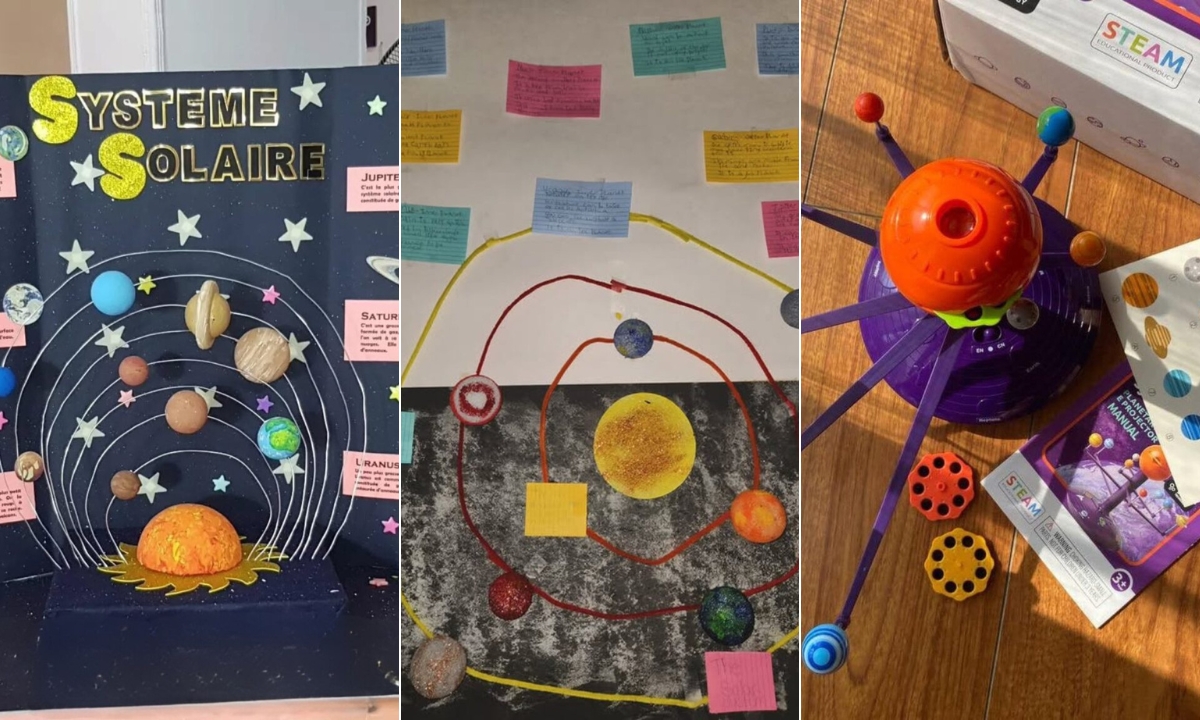
If you have ever helped a child with a solar system project, you know it is not as simple as it sounds.
You start with a big idea, then the questions roll in. We will use plain language to make the solar system easy to teach, simple to build, and fun to learn.
We will fix that here.Whether you are a parent, teacher, or student, by the end you will have a clear plan that works.
Contents
- 1 What is the Solar System for Kids?
- 1.1 Interactive Foam Ball Solar System
- 1.2 Realistic Planet Lineup Display
- 1.3 Hanging Solar System Mobile
- 1.4 Glowing Orbit Model
- 1.5 Solar System Wall Chart
- 1.6 Stand-Up Solar System Display
- 1.7 Orbit Path Project Board
- 1.8 Hanging Planet Garland
- 1.9 3D Foldable Solar System Board
- 1.10 Presentation Board Solar System
- 1.11 Classroom Orbit Activity Table
- 1.12 Planet Layers Learning Station
- 1.13 Focused Planet Display Board
- 1.14 Planet Art Card Series
- 1.15 Handheld Solar System Model
- 1.16 Interactive STEM Solar System Kit
- 1.17 Solar System Galaxy Poster
- 1.18 Student Presentation Models
- 1.19 Solar System Projector Display
- 1.20 Outdoor Solar System Circle Time
- 2 FAQs
What is the Solar System for Kids?
The solar system is a big neighborhood in space with the Sun at the center, and all the planets move around it. It is the reason everything stays in place.
Planets like Earth, Mars, and Jupiter orbit the Sun in their own paths, like cars going around a roundabout. Besides planets, there are moons, comets, asteroids, and tiny rocks floating out there.
For kids, the easiest way to see it is to imagine the Sun as the boss of this space family. The planets follow its pull, and that is why they do not float away.
Every planet has its own size, speed, and distance from the Sun. Earth is the one where we live because it is not too hot or too cold. It sits in what scientists call the Goldilocks zone.
When kids see this picture, they stop seeing the solar system as random balls and start seeing it as a living, moving system that works together.
Save this article for later! 👇👇
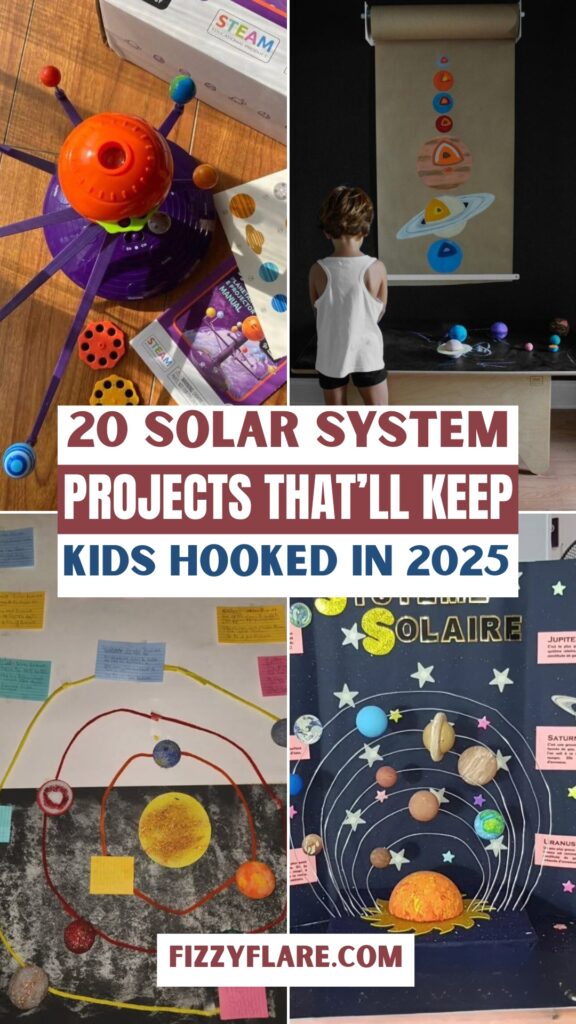
Interactive Foam Ball Solar System
This project stands out for its clear layout and hands-on setup. Use foam balls, paint, and sticks.
Build the model with the Sun at the center. Add warm string lights around the base to highlight the orbits.
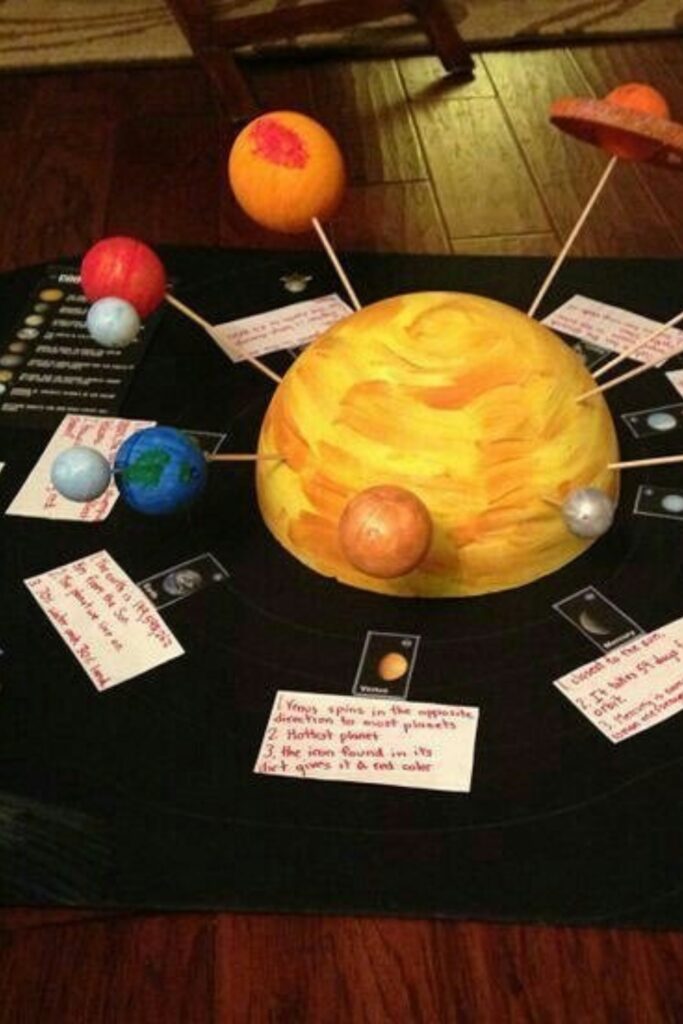
Realistic Planet Lineup Display
This display is great for showing kids the planets in order with clear size differences.
Create it with painted foam balls or printed cutouts, and line them from Mercury to Neptune.
Add LED strip lights behind the setup to give it a soft glow and make each planet stand out.
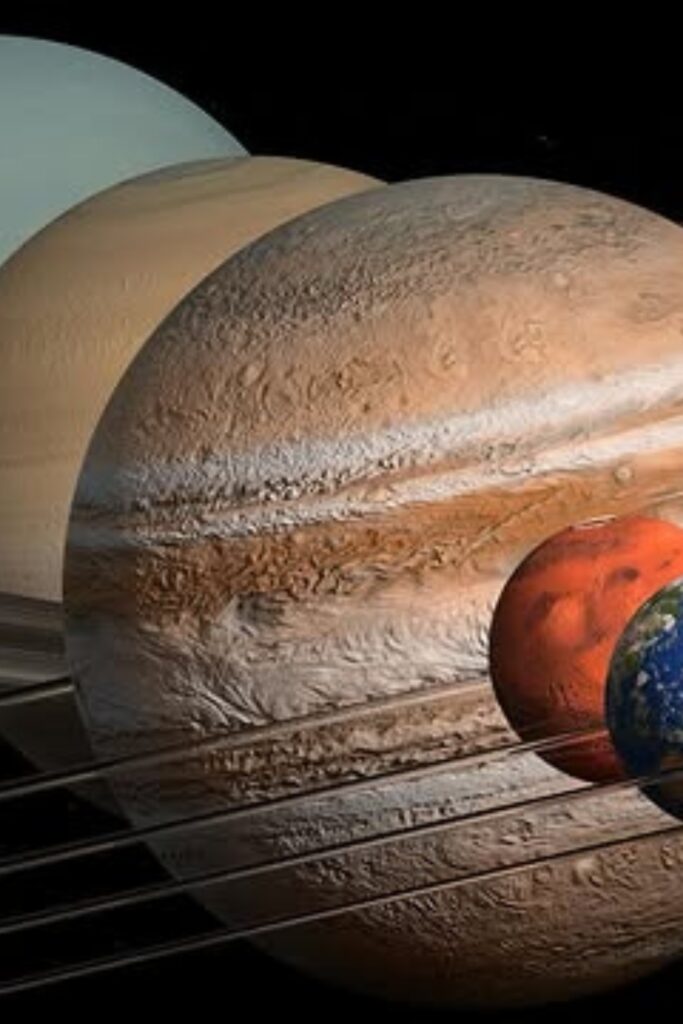
Hanging Solar System Mobile
This ceiling mobile is best for classroom corners where you want the solar system to feel playful.
Use foam balls, string, and a painted base to hang each planet at different lengths.It is a fun way.
Add a small LED or soft fairy lights around the top base to make the planets glow gently.
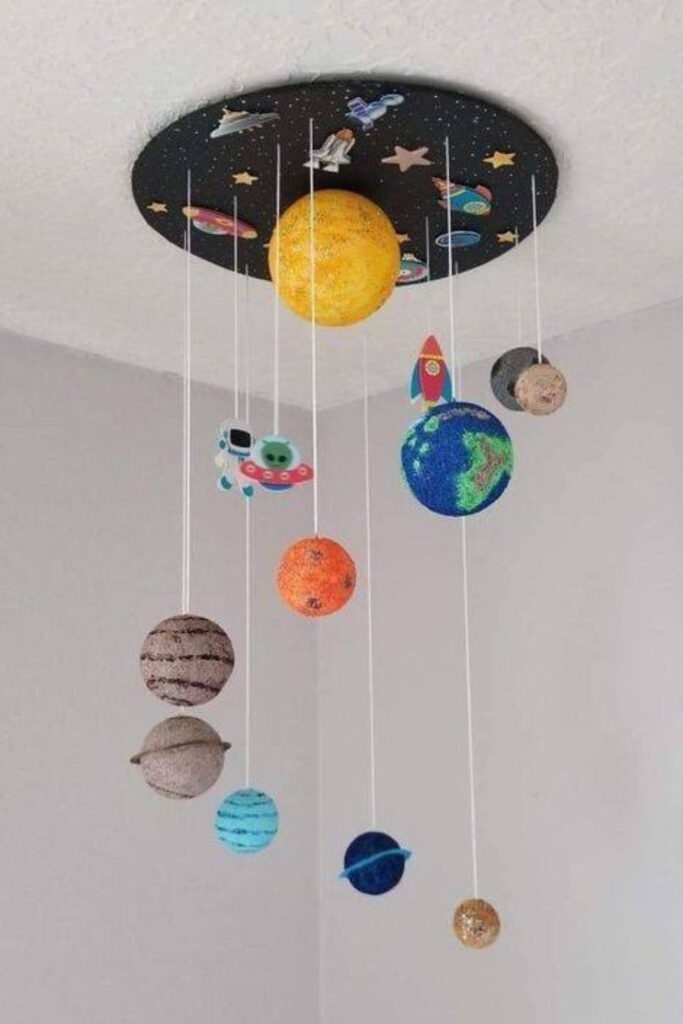
Glowing Orbit Model
This setup is ideal for school projects or science exhibitions where a bold centerpiece stands out.
Use foam balls for planets, wooden sticks for support, and a small LED light for the Sun to create a glowing effect.
The soft light in the center highlights each planet and makes the model look dynamic and realistic.
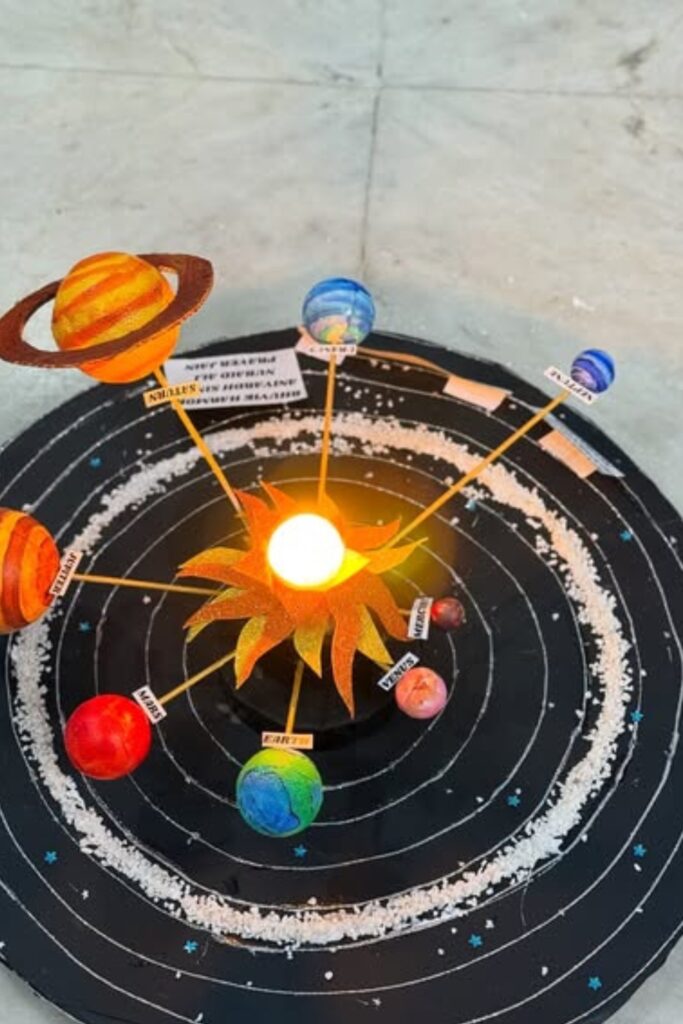
Solar System Wall Chart
This flat wall model is perfect for classrooms or playrooms where you want a quick, clear view of the planets.
Recreate it with colored paper, markers, and labels for each planet. Add glitter stars to make the background lively.
Strip lights around the border give the chart a soft glow and make the orbits and labels stand out in low light.
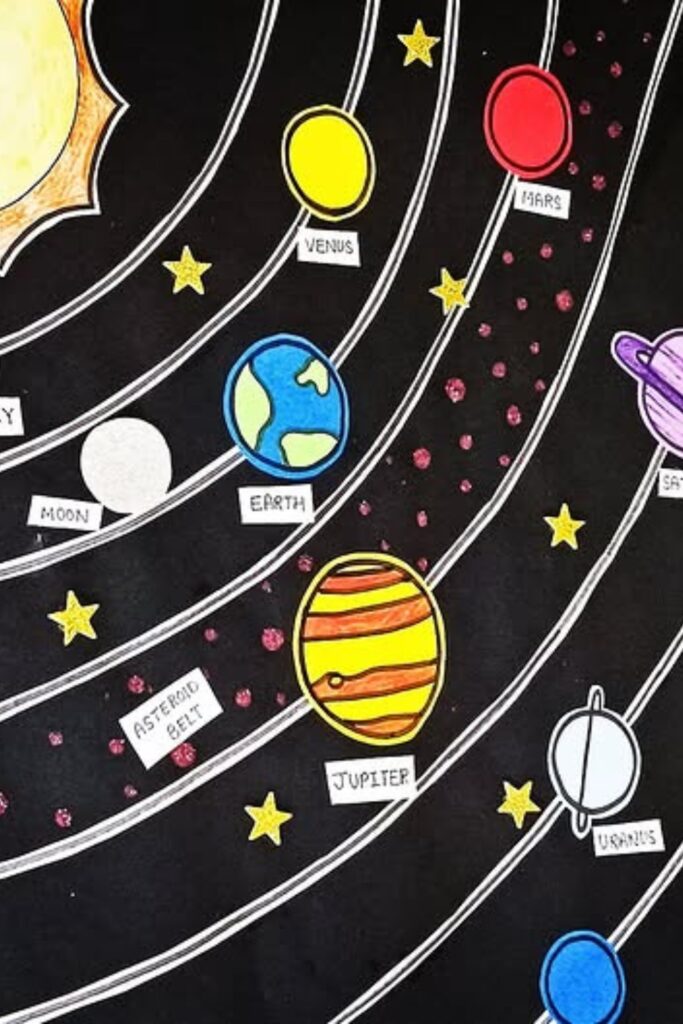
Stand-Up Solar System Display
This upright model is great for desk setups and classroom shelves. It is easy to recreate with printed planet cutouts.
Clear labels help kids quickly identify each planet. Add tiny LED fairy lights along the base to give it a glowing edge.
It is a clean and organized way to make the solar system feel interactive.
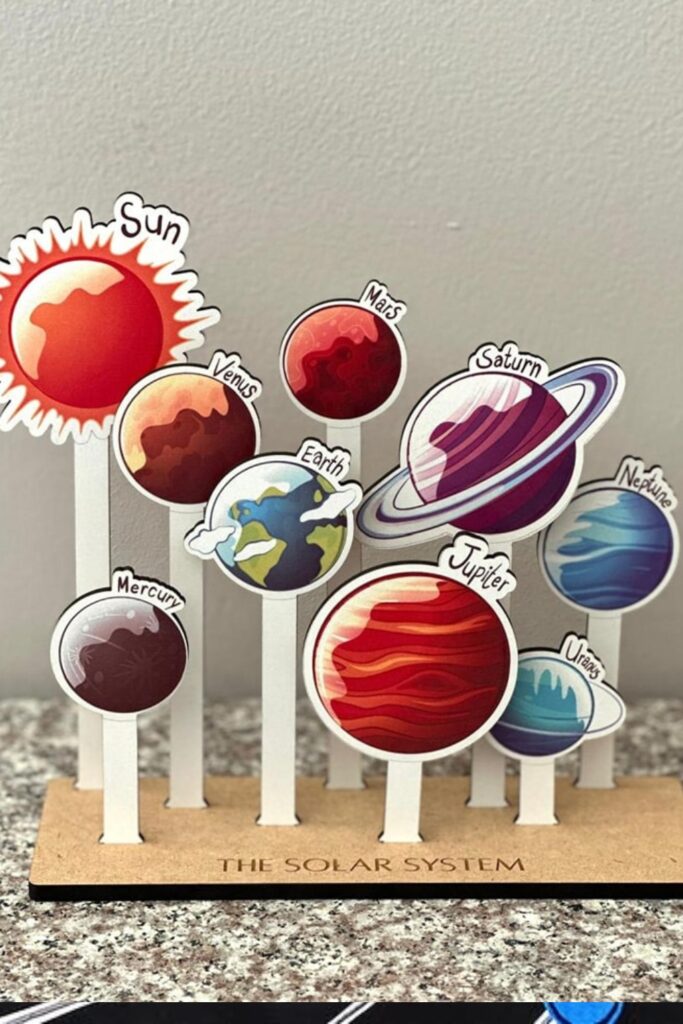
Orbit Path Project Board
Recreate it with foam balls for planets, pipe cleaners or yarn for orbits, and colored notes for facts. Sprinkle glitter or chalk dust for a starry effect.
Add a small LED light at the center for the Sun to make the model glow softly and draw attention to the orbit layout.
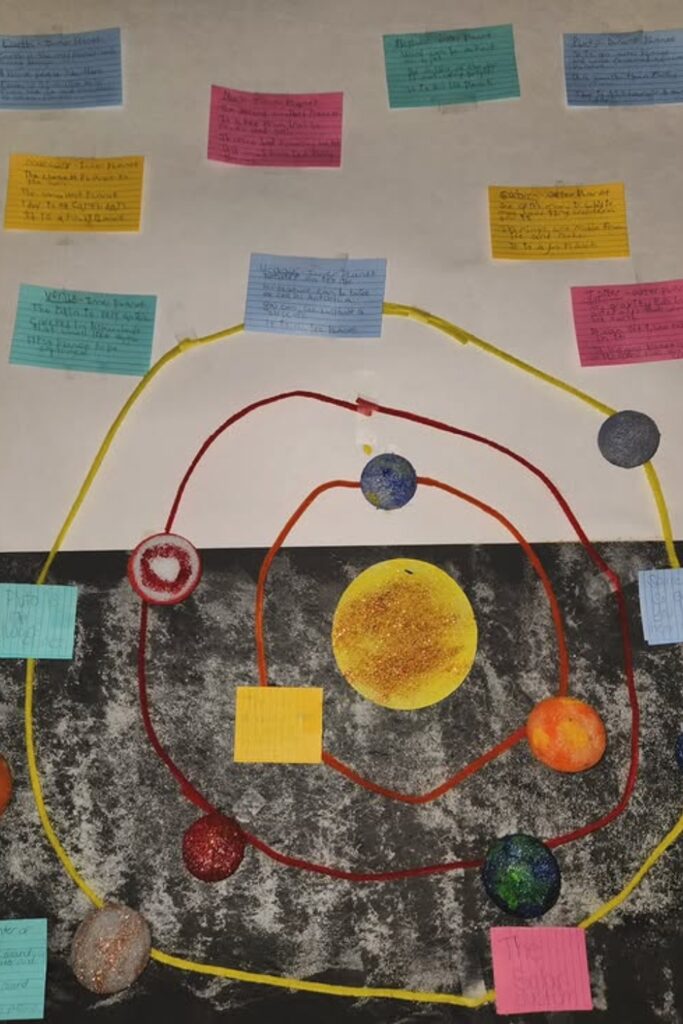
Hanging Planet Garland
Use paper circles painted with watercolors to show each planet, then string them in order from the Sun to Neptune.
The lightweight setup makes it easy to hang across walls or windows. Add mini string lights along the garland to make glowing effect.
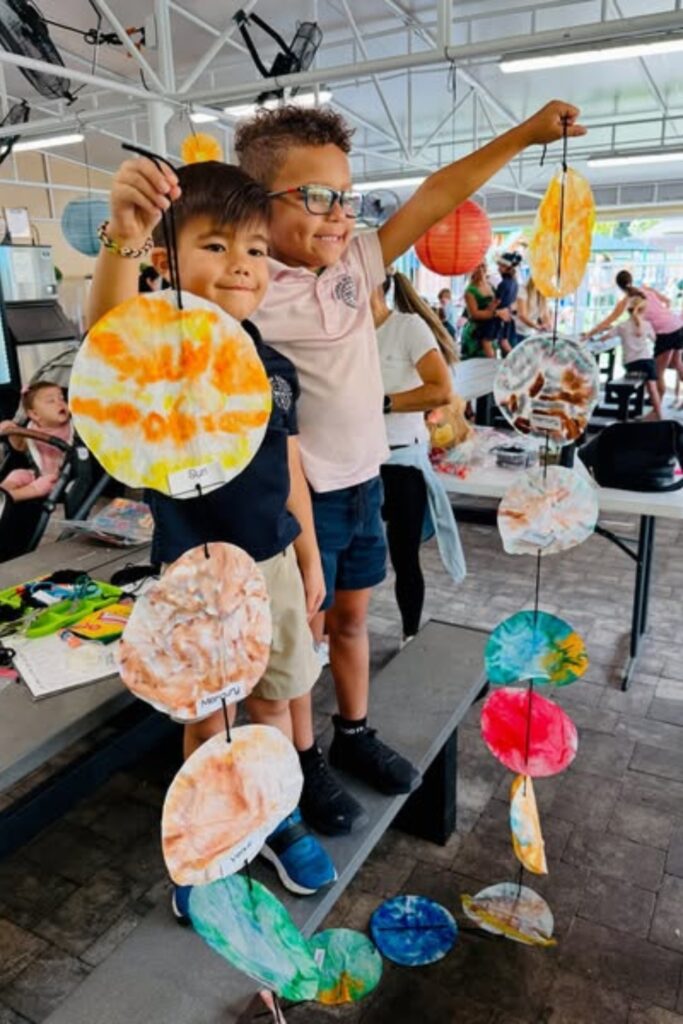
3D Foldable Solar System Board
Use foam balls for planets, wires or string for orbits, and bright lettering for labels.
You want everything in one neat display. The foldable backdrop makes it easy to set up and store.
Add fairy lights around the border or behind the Sun to create a glowing focal point that catches attention right away.
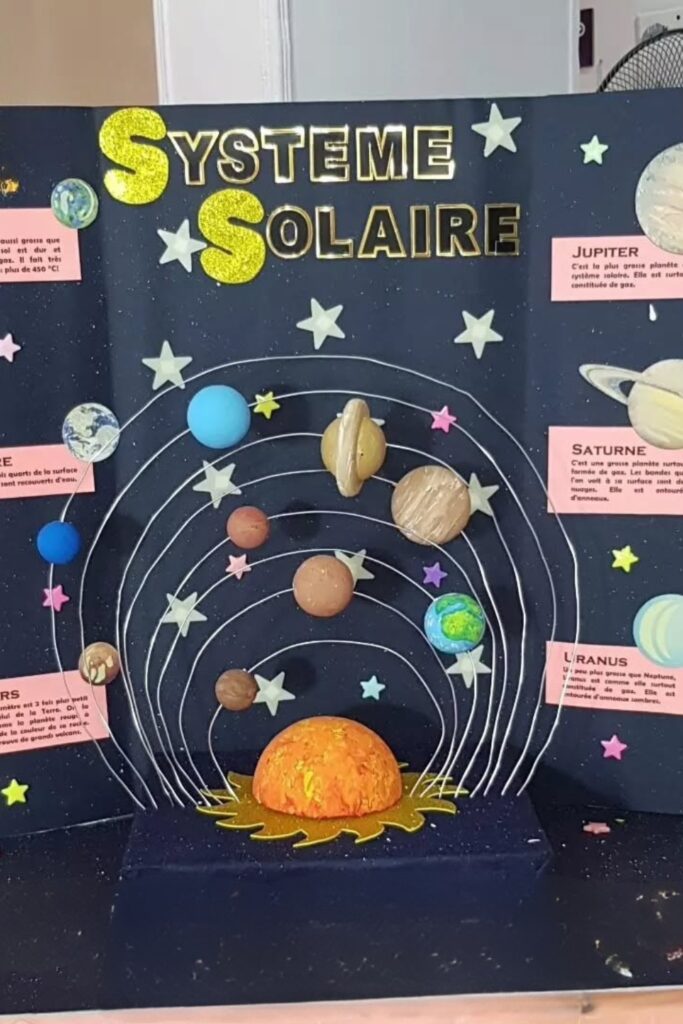
Presentation Board Solar System
Arrange the planets in a straight radial layout to make it easy to point and explain.
Recreate it with foam balls, string, and a black starry board as the backdrop.
Add warm LED lights around the Sun to create a glowing centerpiece that naturally draws everyone’s attention.
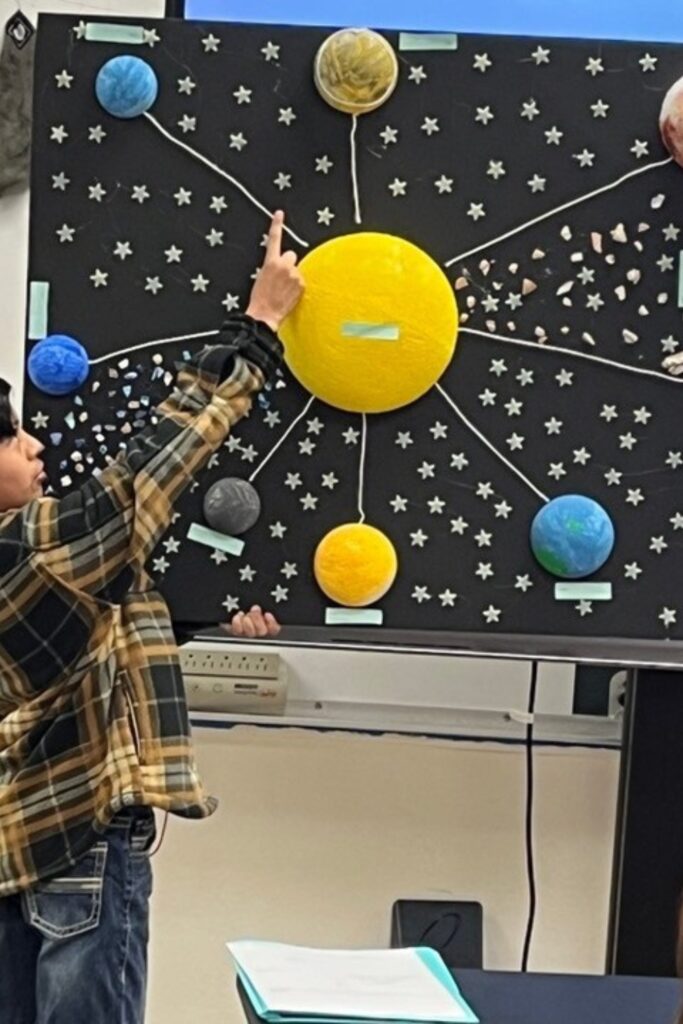
Classroom Orbit Activity Table
Arrange the planets in clear orbits around a bright Sun so kids can explore movement and positions.
Use foam balls, chalk for orbit paths, and a round base for structure. They learn how planets move in space.
Add warm fairy lights around the Sun to create a gentle glow that keeps kids engaged.
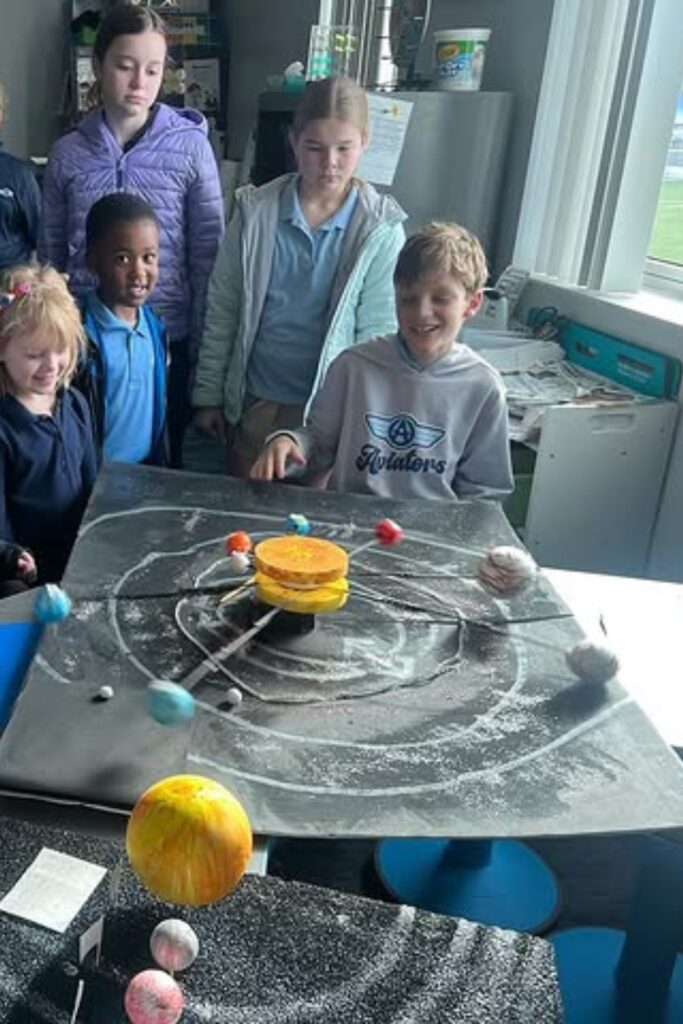
Planet Layers Learning Station
The hanging scroll shows the inner layers clearly, and the table has matching three-dimensional models.
Kids can explore how planets look inside.Recreate it with painted foam balls cut in half to show cross-sections.
Add soft spot lighting or a small lamp above to highlight the details and make the display feel like a mini science lab.
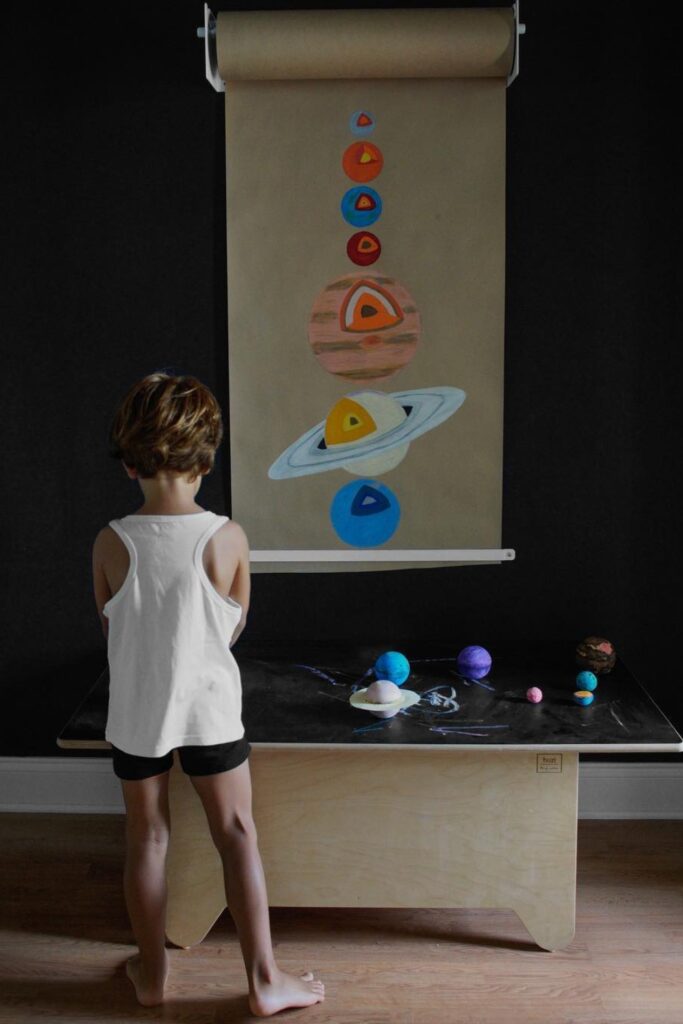
Focused Planet Display Board
You want to highlight one planet, like Saturn. Recreate it with a tri-fold board, printed facts, and a three-dimensional foam model at the center.
Add smaller planet cutouts around it to give context. Use warm strip lights behind the main planet to make it the clear focal point.
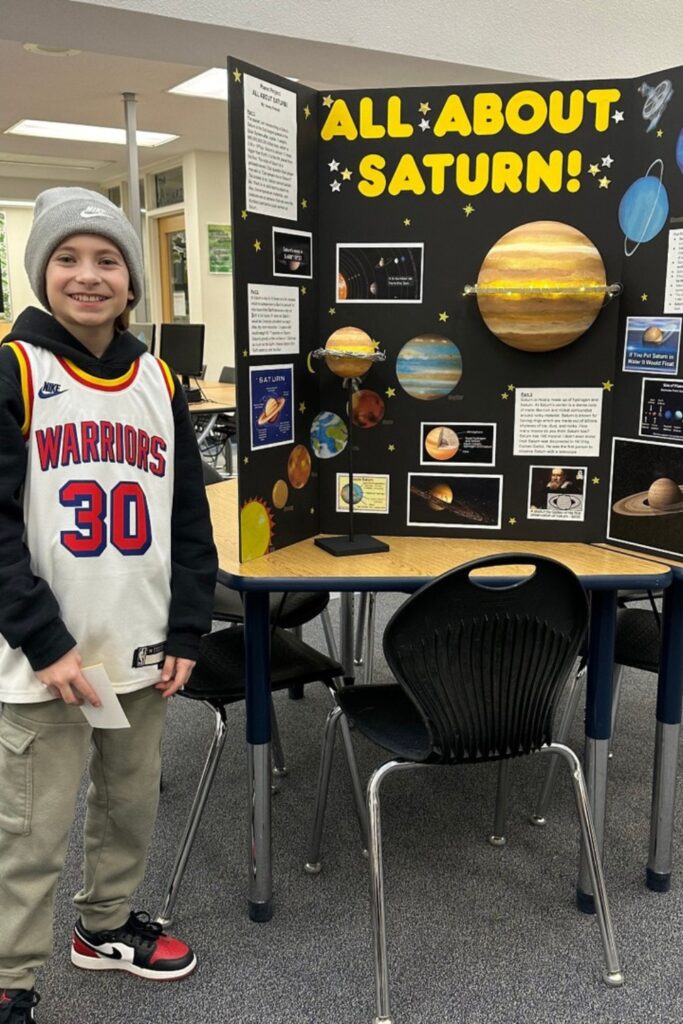
Planet Art Card Series
Each card highlights one planet with a painted background and star details, making it simple yet engaging.
Kids can use sponges or brushes to add texture. When finished, display the cards in order or hang them on a wall.
Add soft string lights around the display to give the dark space theme a glowing, starry effect.
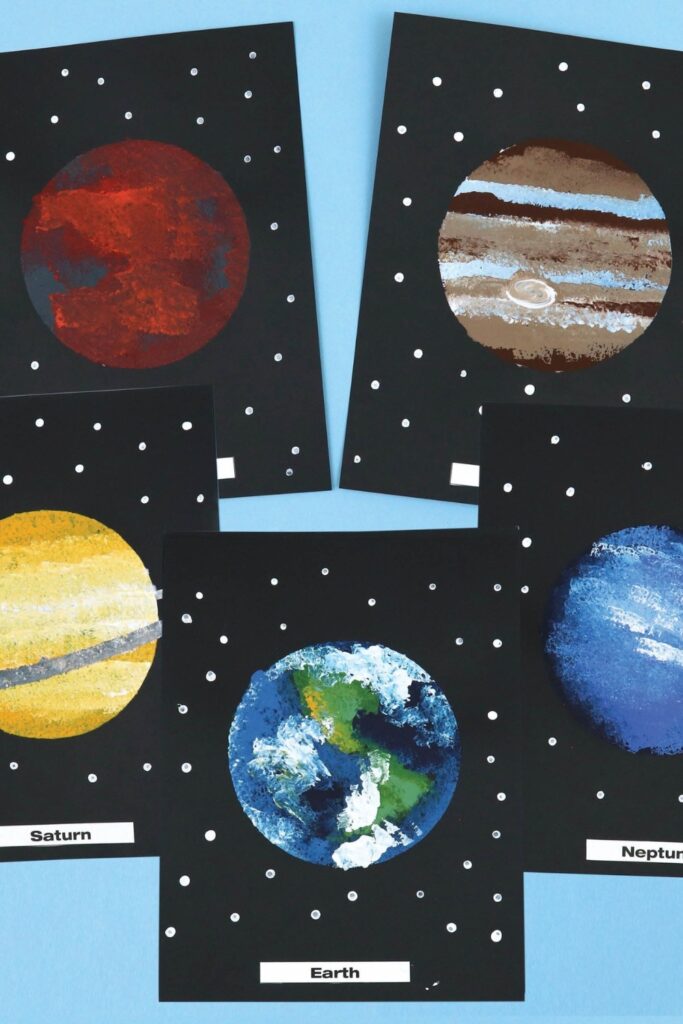
Handheld Solar System Model
This lightweight model is great for presentations or science fair walk-throughs. It is easy to carry.
Kids can explain each planet. Use foam balls, skewers, and a sturdy base to keep everything balanced.
Add a small light inside the Sun to create a warm glow that makes the model look more dynamic and eye-catching.
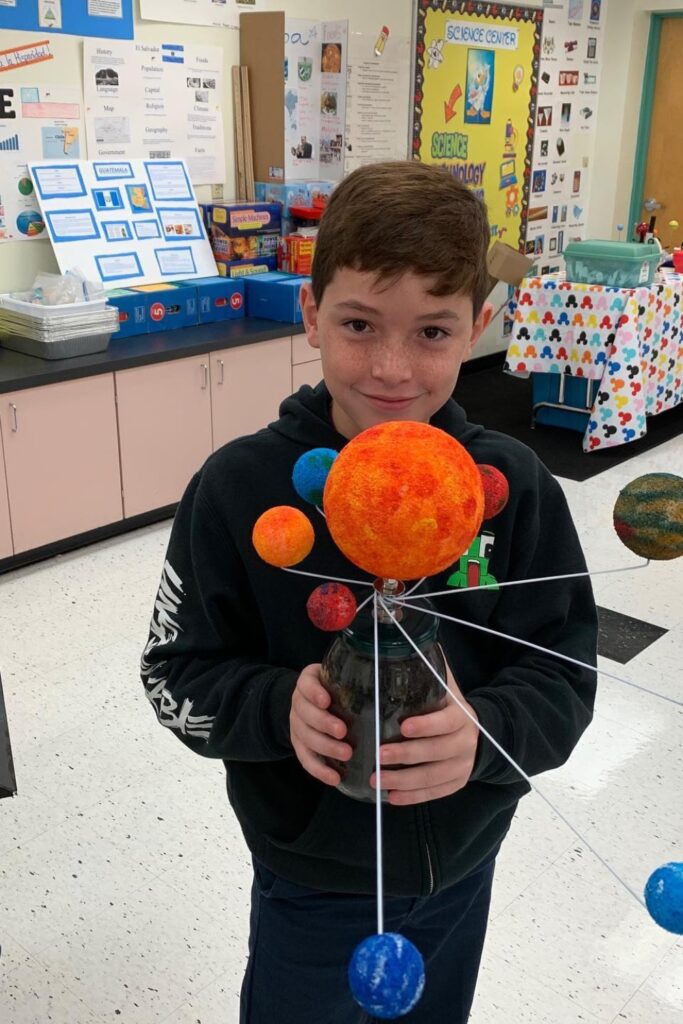
Interactive STEM Solar System Kit
This ready-to-use model is great for hands-on learning at home or in classrooms. It lets kids spin and explore planets in real time.
It is more engaging than a flat display. Set it on a table where everyone can interact with it.
Turn on the built-in light in the Sun to create a glowing centerpiece that helps explain orbits and sunlight in a simple, visual way.
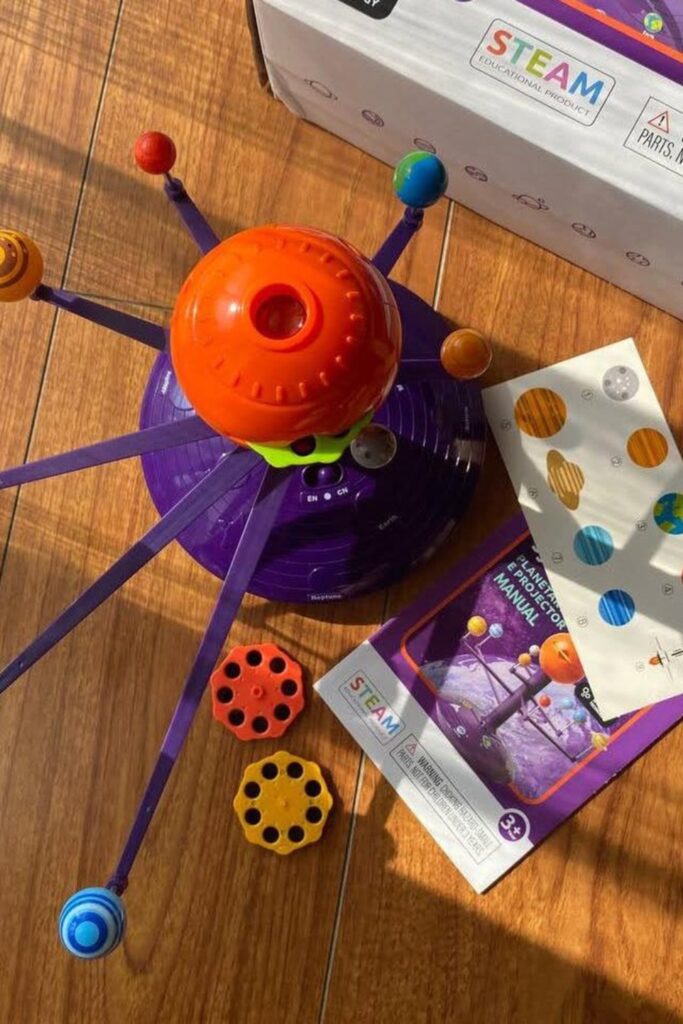
Solar System Galaxy Poster
This bright poster is perfect for classroom walls or learning corners to help kids see the whole solar system at a glance.
The orbits, planets, and space station create a clear, dynamic layout. Recreate this look with a large print or a painted canvas.
Add strip lights behind the poster to give it a glowing galaxy effect that makes the solar system feel larger and more real.
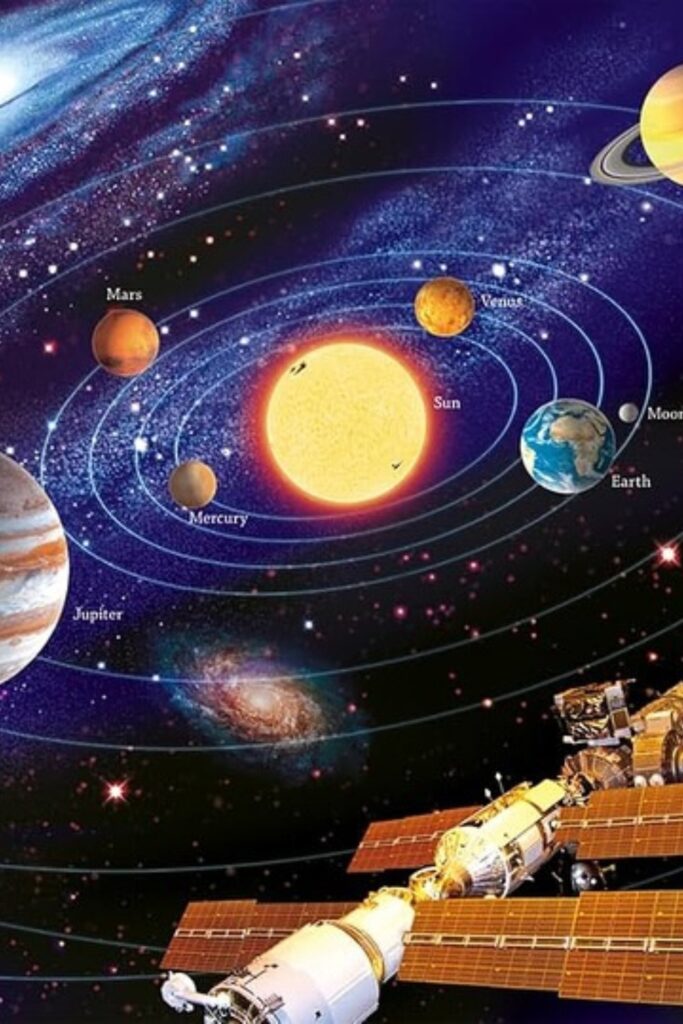
Student Presentation Models
Use foam balls, clear labels, and a sturdy base to make the setup easy to build and hold.
The simple layout helps students present with confidence. Kids work together to explain each planet.
Add a small light inside the Sun for a warm glow that makes the project stand out during classroom showcases or science fairs.
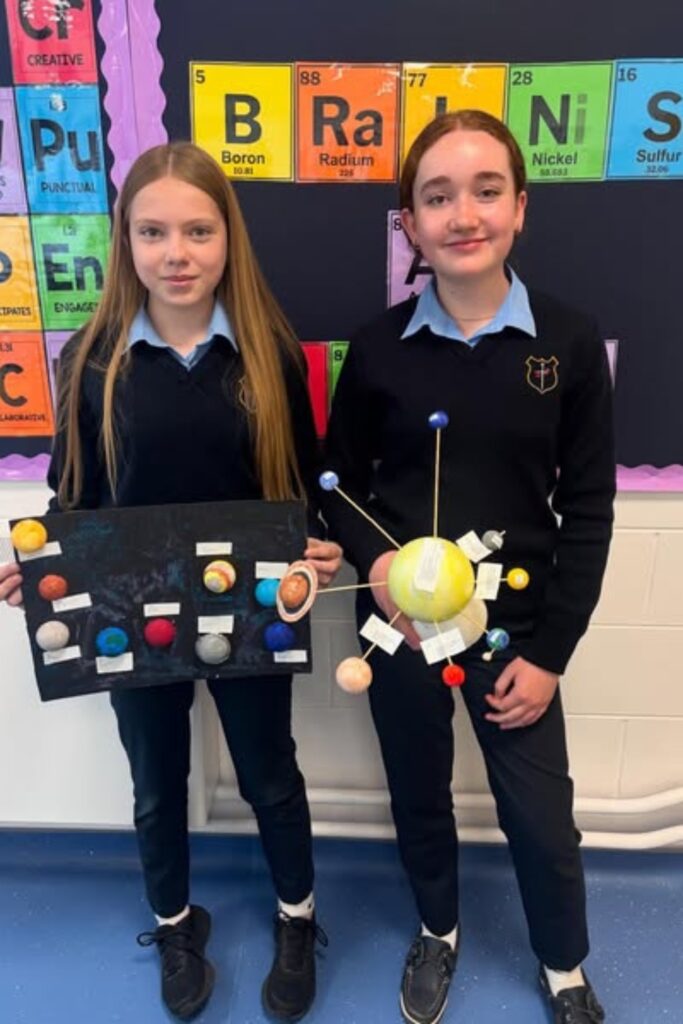
Solar System Projector Display
This projector is perfect for activity corners when you want a full immersive solar system experience without any crafting mess.
Set it on a flat surface, dim the lights, and let it project planets and stars around the room.
The built-in soft light creates a glowing, galaxy-like effect that keeps kids engaged and curious about space.
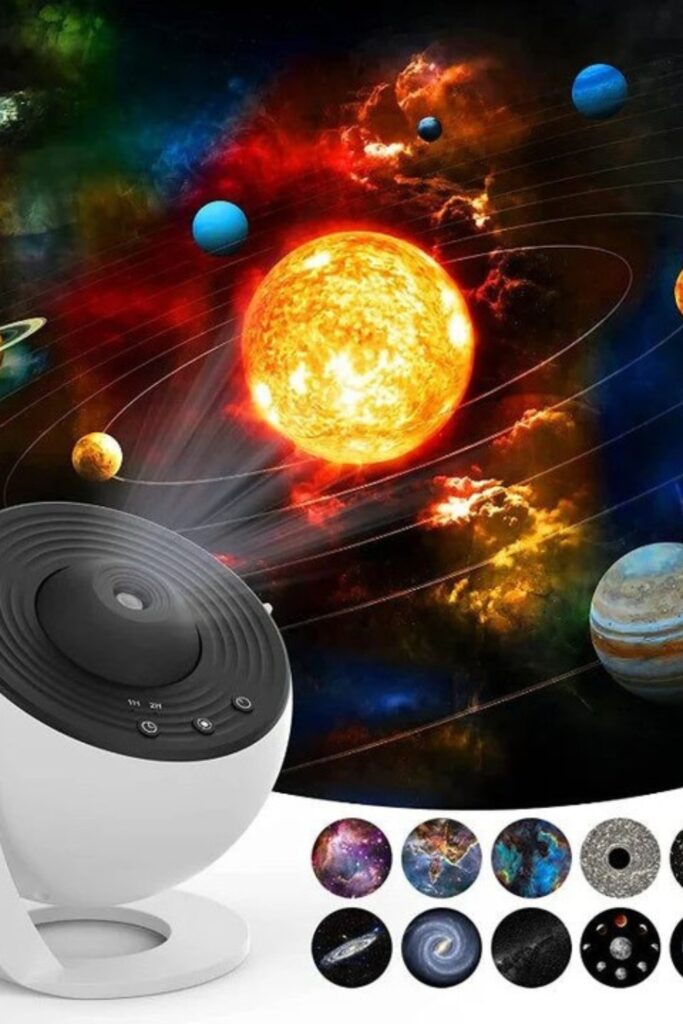
Outdoor Solar System Circle Time
The teacher uses a large three dimensional solar system board to explain planets while kids sit in a circle.
Recreate it with foam balls and a sturdy board. You want to teach space in a fun, interactive way.
Add portable string lights around the display for a gentle glow that makes it even more engaging during outdoor lessons.
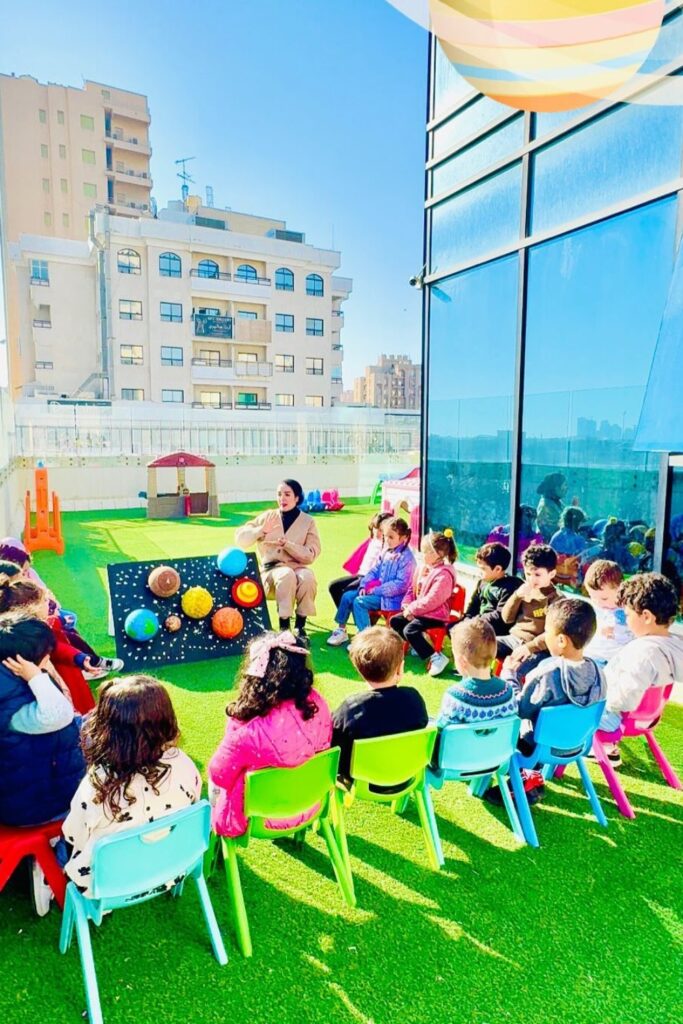
FAQs
How to start a solar project?
Start by picking a simple idea that matches the age group like a foam ball model, wall chart, or hanging mobile.
Gather your materials first, then plan the layout of the Sun and planets. Build step by step, keeping their order and orbit in mind.
If you want a standout look, layer soft lights around the base or center. This makes the project more realistic and eye-catching.
Why is the solar system important?
The solar system helps us understand how Earth fits into a much bigger picture. It explains day and night, seasons, orbits, and how planets move around the Sun.
Learning about it builds curiosity and makes science feel real for kids.It also teaches why Earth’s place is so special, the perfect spot for life to exist.
You may love to read!
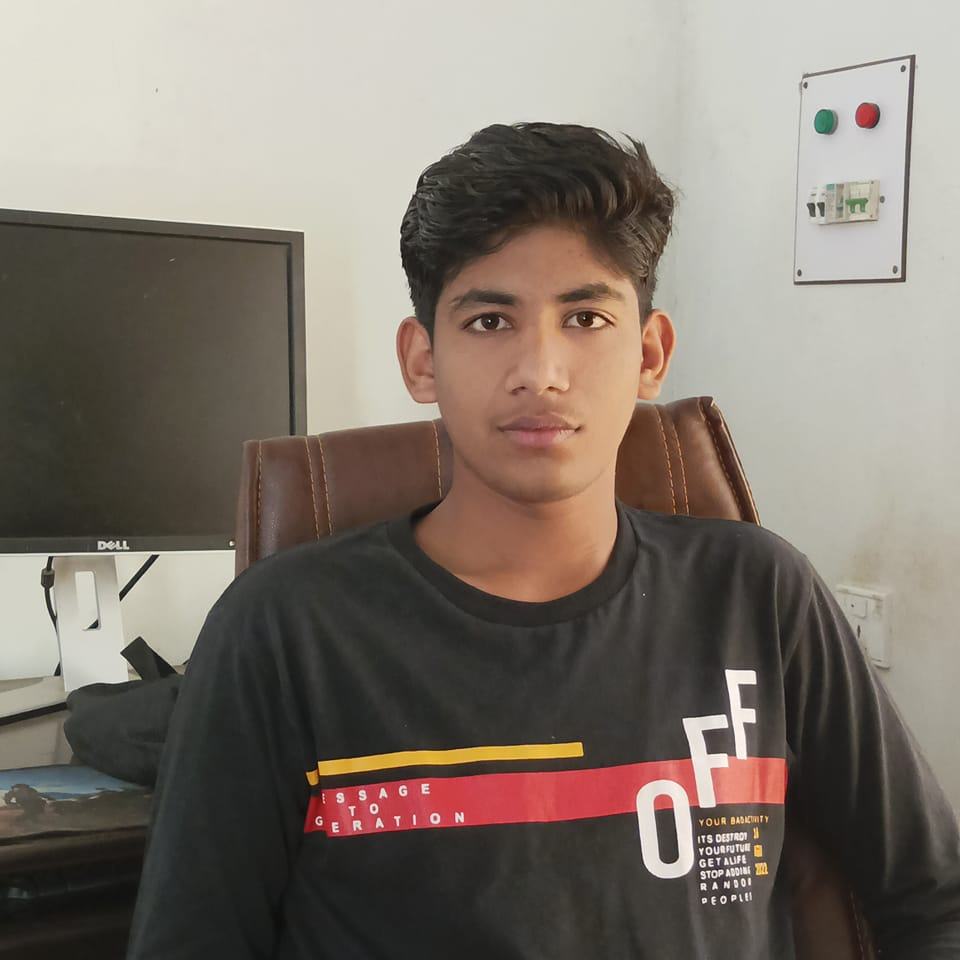
Fasial is the founder of the Fizzy Flare. He has been a passionate blogger since 2021. He ran three different websites in the past few years. Now he is focusing on Fizzy Flare to build an audience and help them organize their life.
